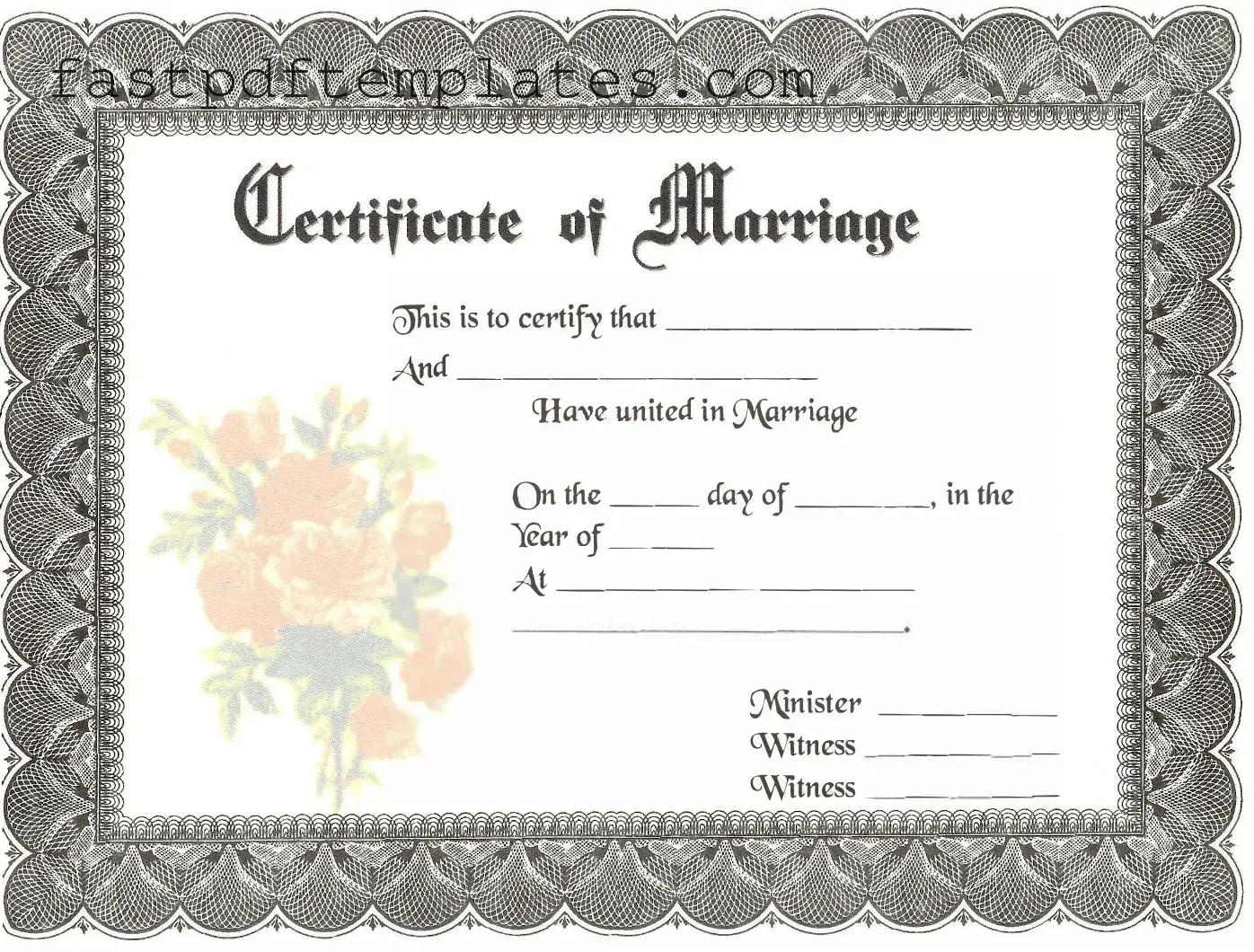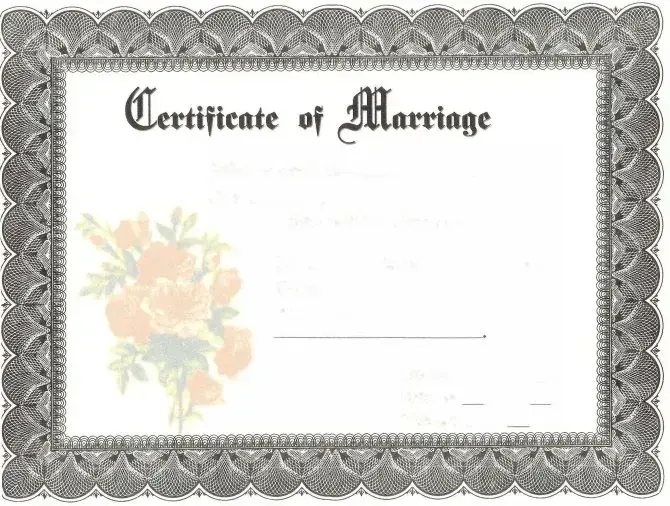Blank Marriage Certificate Form
A Marriage Certificate is an official document that recognizes the union between two individuals. This certificate serves as legal proof of marriage and is often required for various purposes, such as name changes, insurance benefits, and immigration processes. Understanding the importance of this form can help couples navigate the legal aspects of their union with confidence.
Access Document

